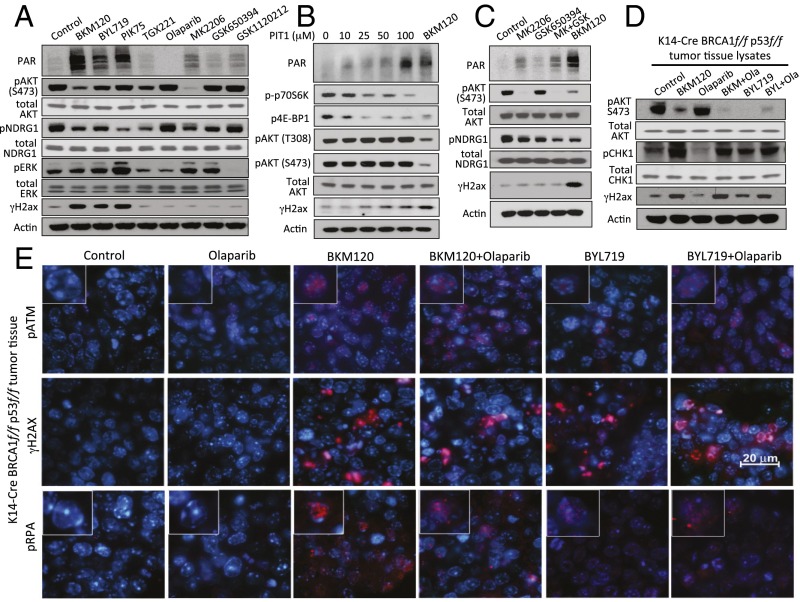Fig. 1.
PI3K, but not AKT, MAPKK, or SGK inhibition induces markers of DNA damage in BRCA1-mutant breast cancers. For A–C, HCC1937 cells were treated for 16 h with inhibitors as indicated. Immunoblotting of total cell lysates was performed with antibodies as indicated. (A) Induction of PAR and H2ax phosphorylation (γH2ax) following treatment with inhibitors of pan-PI3K (BKM120, 1.5 μM), PI3Kα (BYL719, 3 μM; PIK75, 0.5 μM), PI3Kβ (TGX221, 30 μM), the PARP-inhibitor Olaparib (5 μM), and inhibitors of AKT (MK2206, 1 μM), SGK (GSK650394, 10 μM), or MAPKK (GSK1120212, 5 nM). (B) Induction of PAR and γH2ax by the PIP3-mimetic PIT1. (C) Neither AKT nor SGK, nor the combination of AKT and SGK inhibitors, induces PAR or γH2ax. (D and E) Induction of DNA damage indicators in vivo. K14-Cre BRCA1f/fp53f/f tumor-bearing mice were treated with two doses of drugs as indicated [BKM120 30 mg/kg by mouth (PO), BYL719 30 mg/kg PO, Olaparib 50 mg/kg i.p.] 8 and 2 h before killing. Tumors were immediately harvested and processed for immunoblotting of fresh tumor tissue lysates with antibodies as indicated (D) or fixed and stained for immunofluorescence with antibodies as indicated (E). Insets (400× magnification) show representative single cells stained for pATM (Upper) or pRPA (Lower).

